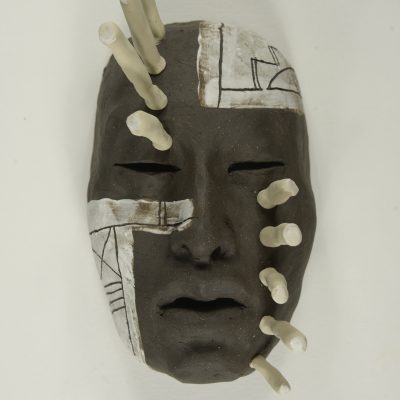The Association of Academic Museums and Galleries believes that “great universities have great museums.” Colorado State University fits the bill for both.
With the newly renovated and named Gregory Allicar Museum of Art, the University and Fort Collins communities have a place to see and interact with a variety of collections of fine art.

From African art to Japanese prints, late Renaissance to modern and contemporary work, the Gregory Allicar Museum of Art offers anyone and everyone an opportunity to engage with other cultures, engage with a variety of media, and see special or traveling exhibits – all at no charge.
“Art is the visual language of the humanities, and gives people inroads into understanding other people’s cultures,” says Linny Frickman, museum director.
Though the art museum has been in existence since 2009, its most recent incarnation launched in Sept. 2016 with the opening of a newly constructed building within the University Center for the Arts.
The museum is dedicated to
- educational vitality, encouraging teaching and learning through interaction with art;
- welcoming engagement, embracing all audiences;
- and honoring a diversity of art making across time periods, geographies, and cultures.
And to that end, the museum is an academic museum, a distinct designation that is unique to museums and galleries located on university campuses around the nation. Because it is an academic museum, the museum’s strategic plan aligns with the University’s strategic plan, the museum’s exhibits align with the curriculum across the College of Liberal Arts, and the museum puts an emphasis on its primary audience: the university community. (Though anyone is welcome to visit, Tues-Sat, 10 am – 6 pm)

In addition, students have the opportunity for a lot of hands-on, practical experience. Whether it’s a museum studies course about collection management and care, an internship, or acting as assistant curator for a show, students can be an integral part of the museum.
Kat Cooke is a second-year graduate student in the LEAP program, pursuing a master’s degree in arts leadership and cultural management. Her internship with the museum focused on visitor research and evaluation. By surveying visitors and classes who came to the museum, Cooke gathered data on how the museum is fulfilling its mission and goals while also identifying opportunities for improvement.
Some of the data have told her that students view the museum as a calm, relaxing place. “Now we’re looking at how we advertise to students that the museum is a place to come sit, relieve stress, and have a place to study,” says Cooke.
Besides being an academic museum, the Gregory Allicar Museum of Art is also a fine art museum, focusing on pieces for their aesthetics, historical and cultural context, and function. This designation - and the museum’s infrastructure - are important because it allows the museum to secure and to show pieces from other museums around the country. For example, the first comprehensive survey of original works that examine the American sport of football called Scrimmage: Football in American Art from the Civil War to the Present (exhibited Aug. – Dec., 2015) contained pieces from the Smithsonian, Harvard University, and the New York Public Library. The humidity and temperature control, lighting, and security allow the museum to borrow these pieces. “We want to keep the objects in the very best condition. We have a stewardship role to be good caretakers and protect the art for the good of the public trust,” Frickman says.
During the capital campaign to expand the art museum, a variety of people donated to support the construction of a new building, and also to install that climate, humidity, lighting, and security infrastructure necessary to make the museum a place to display works of fine art.
"Our donors understand that their gifts are investments in the community that the Gregory Allicar Museum supports," says Ben Withers, dean of the College of Liberal Arts. "The cooperation between a public university and private giving makes possible a context for learning, enabling us to bring together art that enriches people's lives and helps us understand the world around us. This is what great institutions aspire to do for people today and for future generations."
What’s Next
The museum has been accepted to apply for accreditation through the American Alliance of Museums, the professional organization for the field. Accreditation validates that the museum is using best-practice standards in its care of collections, and in its educational and public service role.
The museum will continue to show western and non-western traditions, giving equity to both.
“Art is about empathy for others,” says Frickman. “The arts make us kinder, more compassionate toward others. Understanding others’ cultures enables us to be stronger global citizens.”
Current and upcoming exhibits include:
Jan. 17 - May 6, 2017 | The Griffin Foundation Gallery
IDENTITY/PERSPECTIVES: CONTEMPORARY ART FROM THE ADDISON COLLECTION
This exhibition showcases works by contemporary artists exploring differing concepts of identity. The Gregory Allicar Museum of Art’s contemporary collection was formed in great part through the generous gifts of Polly and Mark Addison who collected contemporary work from around the world. Global in scope, this exhibition includes artists from the Asia, Africa, Europe and North America, reflecting a range of viewpoints and artistic directions.

Permanent Collection | Native American Gallery
SURVIVANCE: NATIVE NORTH AMERICAN ARTS FROM THE PAST AND PRESENT
The Anishnaabe cultural theorist Gerald Vizenor coined the term “survivance” to assert an “active sense of presence and the continuance of native stories” in a world that has suppressed Indigenous cultures. Vizenor’s purposefully ambiguous term has come to represent the work of Native cultures to survive and to resist centuries of colonization, disease, and the suppression of their languages and values.
This exhibit is curated by undergraduate students in Art 317: Native North American Art and highlights the role of art in the survivance of Native North American cultures.
If you can’t make it to the museum in person, you can view the collections online, searching by theme collection, artist, or keyword. http:// uamcollection.libarts.colostate.edu/
